THE ANATOMY OF A RACE RIOT (1862)
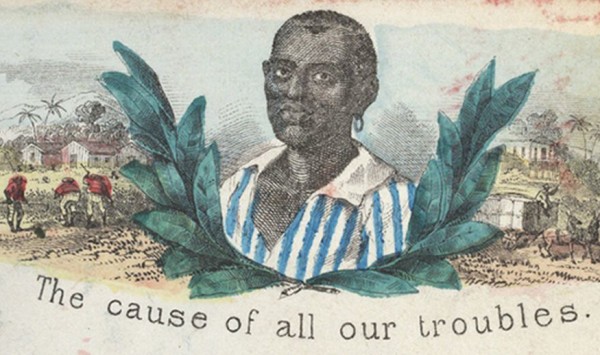
******************************************************************************************************************************** Brownstone Detectives investigates the history of its clients’ homes. The story you are about to read was composed from research conducted in the course of one of those investigations. ******************************************************************************************************************************** “Yesterday afternoon, one of the most disgraceful riots, which has ever happened in this city, took place…” So began the Brooklyn Daily Eagle‘s lead article about an “anti-Negro” riot that had taken place the previous day in the Red Hook section of Brooklyn. “…which, but for the timely appearance of the police, aided by some citizens, might have resulted in a most fearful tragedy.” HOW THE RIOT STARTED Days before the riot, though, “two (black) men who work in the rozin factory at the foot of Sedgewick Street were returning home from their work and stopped at Grady’s liquor store, in the neighborhood of the factories, to take a drink.” When a white man went to enter the establishment, he asked the “colored men” to move out of the way. When they refused, the spark that would light the kindling appeared. Of course, resentments and ill feelings had been brewing for some time, and this event, apparently, provided the “justification” for the backlash that was to come. After this minor liquor store incident – all through the night and into the next morning – various sorts of wild stories began to circulate and rumors to spread, including, unsurprisingly, unfounded accounts about “struck at the negroes with their clubs.”.” Then, when the morning arrived upon which the riot was incited, […]
FIRE, FUN & FIASCOES ON THE 4th (1887)
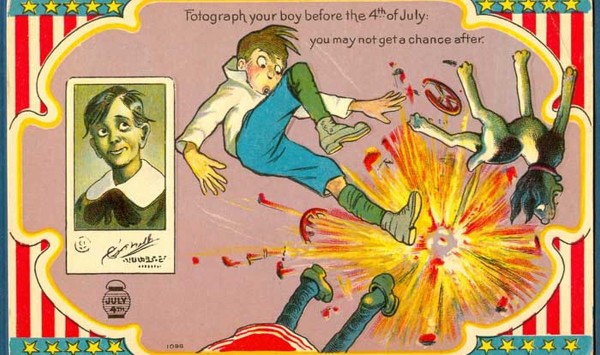
******************************************************************************************************************************** Brownstone Detectives investigates the history of our clients’ homes. The story you are about to read was composed from research conducted in the course of one of those investigations. Do you know the history of YOUR house? ******************************************************************************************************************************** A lot of accidents happen on the 4th of July. While it has been a day of celebration for Americans since its inception, certain citizens have tended to go a bit too far with their fireworks and other dangerous weapons. Back in 1887, a few days after Independence Day, a listing of the damages occurring and casualties effected on that date appeared in the Brooklyn Daily Eagle – once the authorities had had the time to assess the collective destruction. “Pistols and pyrotechnics of every kind were used with absolute impunity by even mere children,” the paper noted, “and the wonder is that more accidents did no occur.” The following list reflects a number of police blotters and lays out the accidents occurring primarily in the Eastern District (Williamsburg and Bushwick areas, and parts of Bed-Stuy). It is partial, but it will 1) boggle your mind, and 2) make you laugh. FIRE CRACKERS AS ASSAULT WEAPONS 8:30 – A boy whose identity could not be discovered threw a firecracker at the peanut stand outside the frame building at 21 Grand street and set it on fire. The building, which was owned and occupied by Sauer Brothers as a saloon, was damaged to the amount of $500 before the flames were extinguished. […]
SHOT BY AN ORGAN GRINDER (1895)
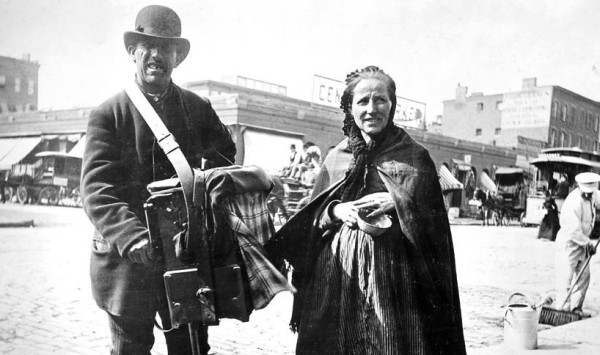
******************************************************************************************************************************** Brownstone Detectives investigates the history of our clients’ homes. The story you are about to read was composed from research conducted in the course of one of those investigations. Do you know the history of YOUR house? ******************************************************************************************************************************** Two things can be said of most 19th century Brooklyn organ grinders – they were rarely accompanied by monkey assistants, and they were chiefly non-violent types. As romantic a figure as they are to us today, though, they were not altogether loved by the citizens of their time. Many found the “music” of their hand organs to be grating and and an unforgivable breach of the peace. By and large, most were harmless poor Italian men simply plying their trade in order to bring in a meager living – usually to feed a large family. One morning, though, in December of 1895, the tune of one grinder did not present as sonorous music to the ears of a rising Brooklynite, and in the process this resident found that, attempting to prevent the strains of a lilting ballad, he had “stirred the wrong Italian.” OUTSIDE A BAR ON AN EARLY MONDAY MORNING Michielo Geraso, accompanied by another Italian with a hand organ, appeared in front of the saloon of Bernard Lyons on Tillary street at about 9:30 a.m. Geraso’s companion turned the organ crank while Geraso “made ready to collect money.” The organ had scarcely tuned up when the Italians were ordered to move on. Lyons’ saloon was closed on account of […]
WHEN MAY DAY WAS MOVING DAY (1847)
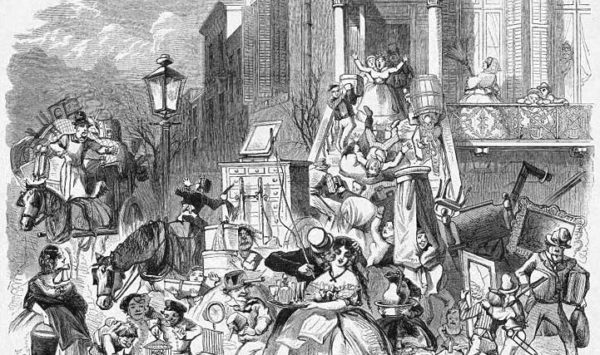
******************************************************************************************************************************** Brownstone Detectives investigates the history of our clients’ homes. The story you are about to read was composed from research conducted in the course of one of those investigations. Do you know the history of YOUR house? ******************************************************************************************************************************** Imagine, as a New York renter, waiting with dread every year for May 1 to arrive. It meant that you, like many untold thousands of other renters in the city, had to move. Now, consider the competition for hiring moving vans and movers – and the surge pricing associated with every aspect of it. This was exactly what took place in New York City on the first day of May starting in the early 19th century and lasting for about 120 years through WWII. While the annual event may have originated as a custom, the tradition was actually couched in law in 1820 when an act of the New York State legislature was passed into law, mandating that all housing contracts were valid unto the first of May (unless the day fell on a Sunday, in which case the deadline was May 2). In other words, the landlord basically had his tenants by the law. And it rarely ended well for the tenants. According to the New York Times, February 1, sometimes known as “Rent Day,” brought landlords togive notice to their tenants what the new rent would be after the end of the quarter, and the tenants would spend good-weather days in the early spring searching for new houses and […]
THE “GOETHE” AT No. 461 GREENE AVE. (1890)
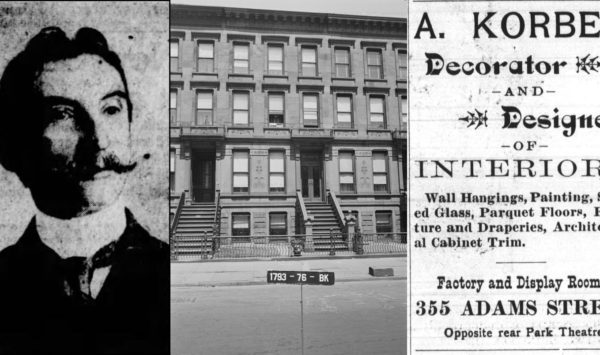
******************************************************************************************************************************** Brownstone Detectives investigates the history of our clients’ homes. The story you are about to read was composed from research conducted in the course of one of those investigations. Do you know the history of YOUR house? ******************************************************************************************************************************** Starting in the late 1880s, the Brooklyn Daily Eagle started a series of articles which described – in great length and detail – the interiors of individual newly-built or renovated houses. These houses were usually brownstones belonging to those affluent or upper-middle-class members of society. Not only did such articles describing the interiors of neighbors’ homes sell newspapers, but the articles also served as advertising directed at those in the market for a townhouse to have a home of their own. These advertisement-articles were placed, likely at the expense of the designers responsible for the “interior decorations” being described, as each piece often ended with what readers wanted to know: “Who did the work?” WORK WAS DONE BY A. KORBER Albert Korber, who went by “A. Korber,” was an architect and designer who settled in Brooklyn at the age of 15. Three years later he “started business on Adams street as a manufacturer of picture frames and moldings. Several years later he founded the decorating business which bears his name, with showrooms on Montague street and a factory for the manufacture of interior woodwork and furniture in South Brooklyn.” By 1889, Korber was 42, a successful decorator throughout the City of Brooklyn. His specialty was making the entrance to a house […]
A BLACK PORTER ON WHITE 12TH ST (1901)
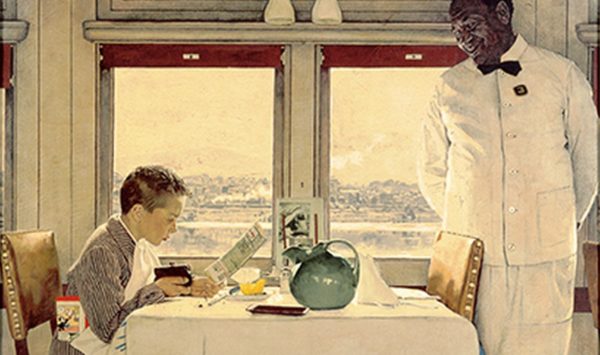
******************************************************************************************************************************** Brownstone Detectives investigates the history of our clients’ homes. The story you are about to read was composed from research conducted in the course of one of those investigations. Do you know the history of YOUR house? ******************************************************************************************************************************** Back in Victorian Brooklyn, segregated neighborhoods were the norm. The only blacks that most whites expected to see on their streets were those who worked there as maids or who participated in other working class trades. Blacks – commonly referred to then as “coloreds” or “Negroes” – rarely lived cheek-and-jowl with whites. On the rare occasion that a black family moved into a white neighborhood, an enormous amount of pressure was usually placed upon the family to move out immediately. It was for this reason that most neighborhoods remained segregated by the turn of the century. One such “Negro” family moved into the Gowanus section of Brooklyn in 1901, at No. 198 Twelfth Street, between Third and Fourth Avenues. It was not long before the family’s new white neighbors started to show their own colors as they began – very publicly in the newspapers – to register their extreme displeasure and disgust at the “intruders” on their block. This was a very highly charged story, to be sure, but was it factual? Or, was it generated to sell a house? The Brownstone Detectives investigated… WHOLE BLOCK EXCITED OVER ADVENT OF NEGROES… This story took place in the summer of 1901. Reported by the Brooklyn Daily Eagle, it seemed a sensationalist piece, […]
THE “IMPOSING” VIEW FROM OCEAN HILL (1848)
******************************************************************************************************************************** Brownstone Detectives investigates the history of our clients’ homes. The story you are about to read was composed from research conducted in the course of one of those investigations. Do you know the history of YOUR house? ******************************************************************************************************************************** Before there was Ocean Hill—the Bedford-Stuyvesant neighborhood—there was Ocean Hill—the section of Green-Wood Cemetery. Whether one influenced the other is lost to the ages. What is clear, however, is that both locations got their names from a geographical point from which a body of water could clearly be viewed. “At this point, now known as Ocean Hill,” described a contributor (whose pen-name, revealingly, was Investment) in an edition of the Brooklyn Daily Eagle published just a few years before the Civil War began, “we have reached the highest point on the avenue (Fulton Street) and the most commanding elevation of ground in the city; and which, for grandeur, beauty and variety of its scenery, cannot be surpassed. “The ocean view,” Investment continued, “is especially grand and imposing.” Investment, whose contribution to the paper existed as a thinly veiled promotional piece for Brooklyn, was describing the “advance in the value of Brooklyn real estate.” From Fulton Ferry he advanced down Fulton Avenue to “gather such information as will enable the public to form an intelligent estimate as to the present and prospective value of property on and near this great thoroughfare.” “At this point Fulton avenue is distant but a few hundred feet from Atlantic avenue on the south, and Broadway on […]
THE BABY FARM OF UTICA AVENUE (1890)
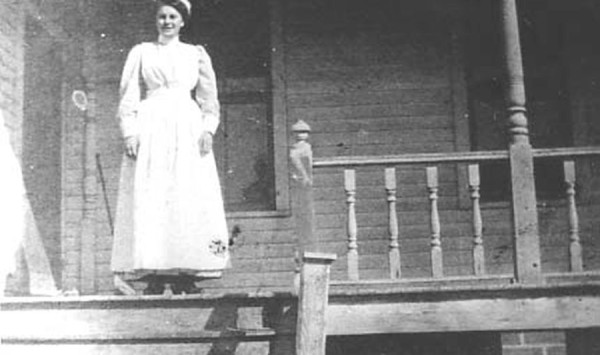
******************************************************************************************************************************** Brownstone Detectives investigates the history of our clients’ homes. The story you are about to read was composed from research conducted in the course of one of those investigations. Do you know the history of YOUR house? ******************************************************************************************************************************** The red flags began to go up slowly – one by one – as babies began to die. After Annie Smith, 1 month and 14 days old, it was wee Cora Tanner, just 7 days old. With two infant deaths being reported within the same month from a private residence at 126 Utica Avenue, Inspector Corcoran of the Department of Health was detailed to look into the matter. THE INSPECTION Arriving at 126 Utica Avenue, Inspector Corcoran discovered a “two story frame structure in which are available for maternity and nursery purposes four small rooms and an attic apartment.” Tending this facility, according to the Brooklyn Standard Union, was a Mrs. Emily V. Wilson, her daughter, and a nurse. Onsite, though, was also one baby and five women “patients.” Corcoran asked Mrs. Wilson to show her license, upon which request “she produced two documents given her by the Department of Health.” The first, dated 12 September 1886, granted permission to board four children at 100 Utica avenue, while the other bearing the date of 18 June 1888, permitted her to keep six children at 795 Herkimer street. She had no license for 126 Utica Avenue. At this point the inspector asked to view the house’s register, “which the law requires of […]
B’KLYN GALS SEEK LEAP YEAR COWBOYS (1912)
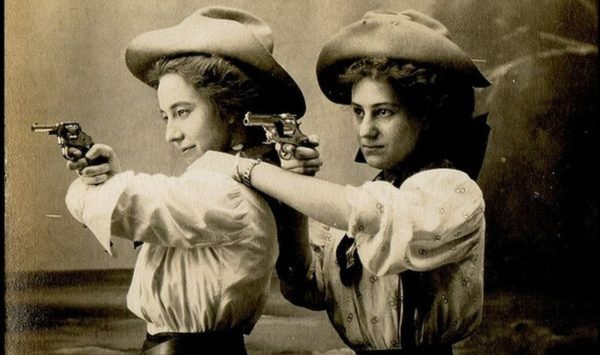
******************************************************************************************************************************** Brownstone Detectives investigates the history of our clients’ homes. The story you are about to read was composed from research conducted in the course of one of those investigations. Do you know the history of YOUR house? ******************************************************************************************************************************** “Come on boys; don your riding chaps, brush up your sombrero and dig out your rusty six-shooter and look-like a moving picture hero!” So started the article in the Sacramento Bee in April of 1912 about two Brooklyn sisters who were looking far afield for long-distance leap year affairs. Alma and Lou Bahn of 546 Washington Avenue, a boarding house between Fulton Street and Atlantic Avenue known as The Berwick, were taking this leap year business seriously, it seemed, and the men of the borough of Brooklyn, it seemed, could not hold down the sisters’ adventuresome spirits. “They want to correspond with you and perhaps the corresponding may lead to love and to the altar,” continued the Bee story. “The girls apparently realize that California is overrun with cowboys and that some of them are so dare devil and roguish that they buy their chewing gum in cigar stores,” continued the Bee. “Therefore, they ask for the names of several in order that they can each pick out a ‘nice’ cowboy and not a Black Bart the second or a California Jesse James. “The Brooklyn belles do not give their ages, but their pictures indicate that they are, or were, young. That they are not idle flirts seeking to catch some […]
THE WHITE ELEPHANT OF AVENUE “O” (1914)
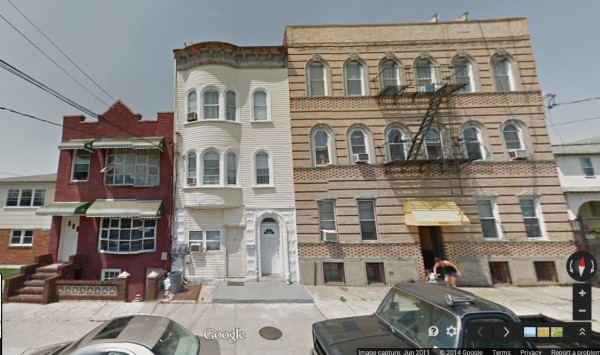
******************************************************************************************************************************** Brownstone Detectives investigates the history of our clients’ homes. The story you are about to read was composed from research conducted in the course of one of those investigations. Do you know the history of YOUR house? ******************************************************************************************************************************** We came across an old newspaper photograph from 1914, republished 30 years later in an old newspaper in 1954. This picture not only celebrates our first entry for a house in the Flatlands section of Brooklyn, but it specifically illustrates a “long-familiar landmark in Old Flatlands.” So noted the text accompanying the picture in the Old-Timers section of the Brooklyn Daily Eagle from May of 1954. Having stumbled across this interesting picture, we were curious to learn if the 2-story and basement structure in question – No. 5407 Avenue O, Brooklyn – was still there, and, by the way, if it was still “white.” So, we looked the address up on Google Maps, expecting to find a shopping mall or a 1940s era soap factory, and – miracle of miracles – there it was! There is a “newer” house to the left of it now, and it seems to have been faced with some vinyl siding (yes, white), but the house appears to be largely as it was back in 1914. The story accompanying the pic in the 1954 article reads as follows: “THE OLD WHITE ELEPHANT”-This picture, taken in 1914, shows a long-familiar landmark in Old Flatlands located at 5407 Avenue O.” COMPLETE FAMILY “The Di Carlo family is shown. […]